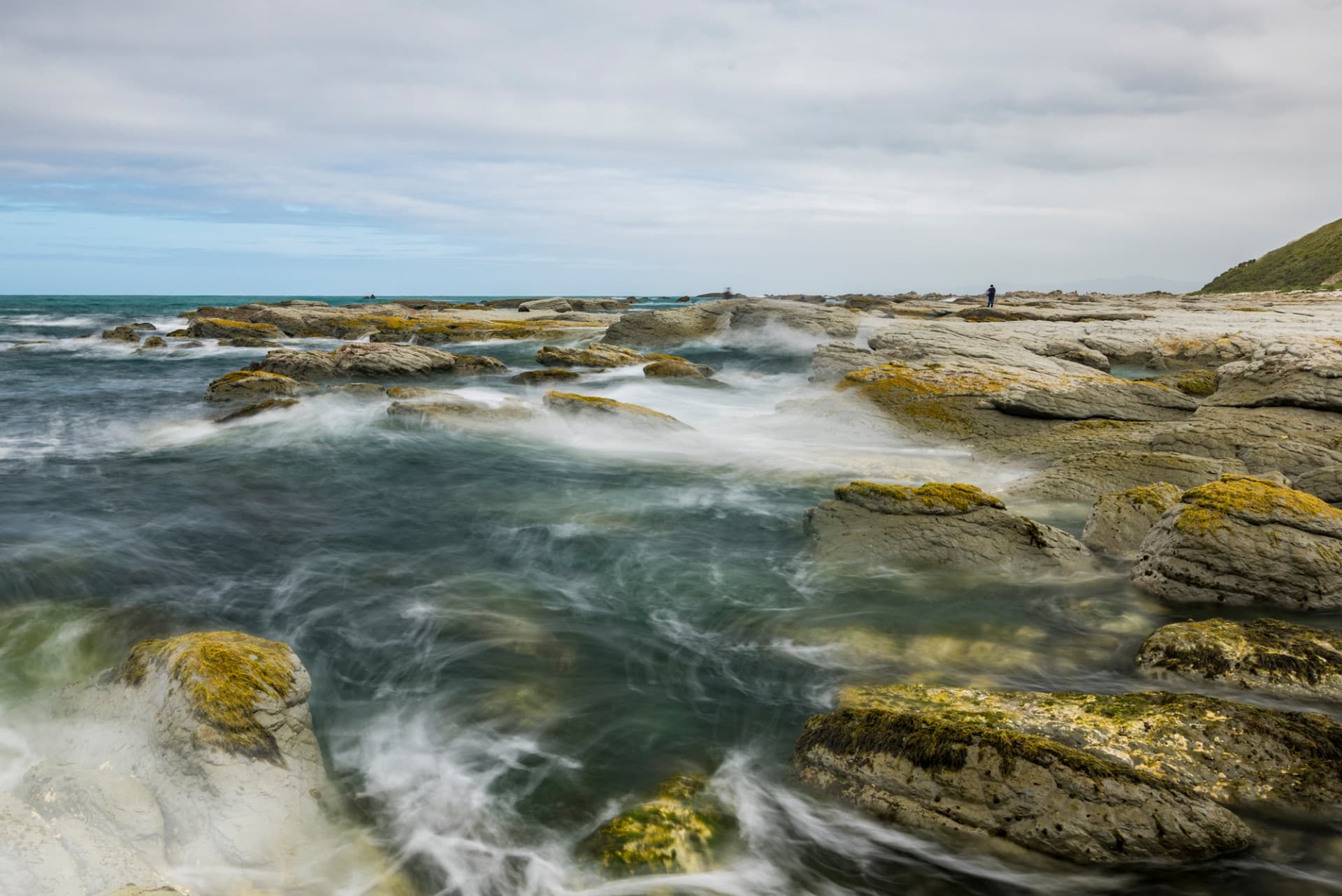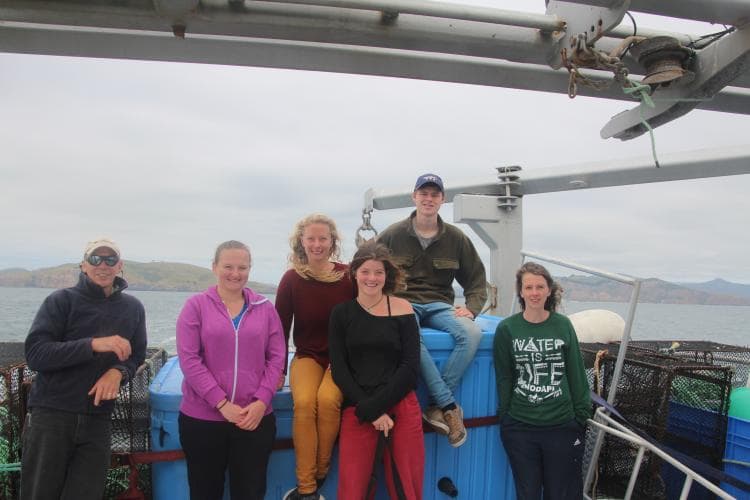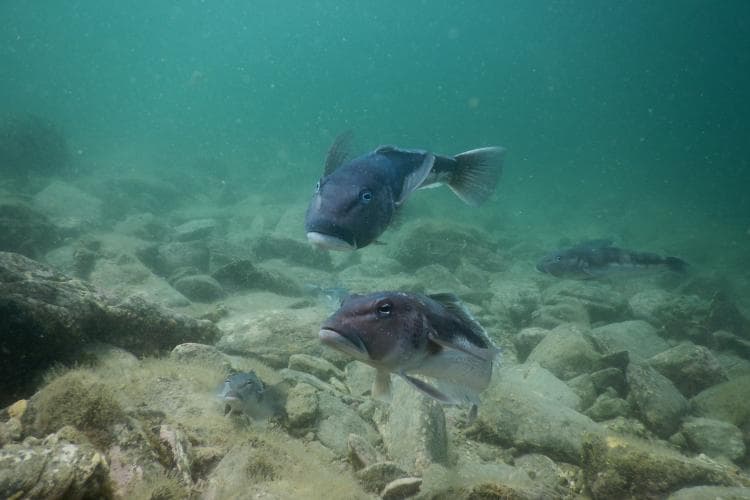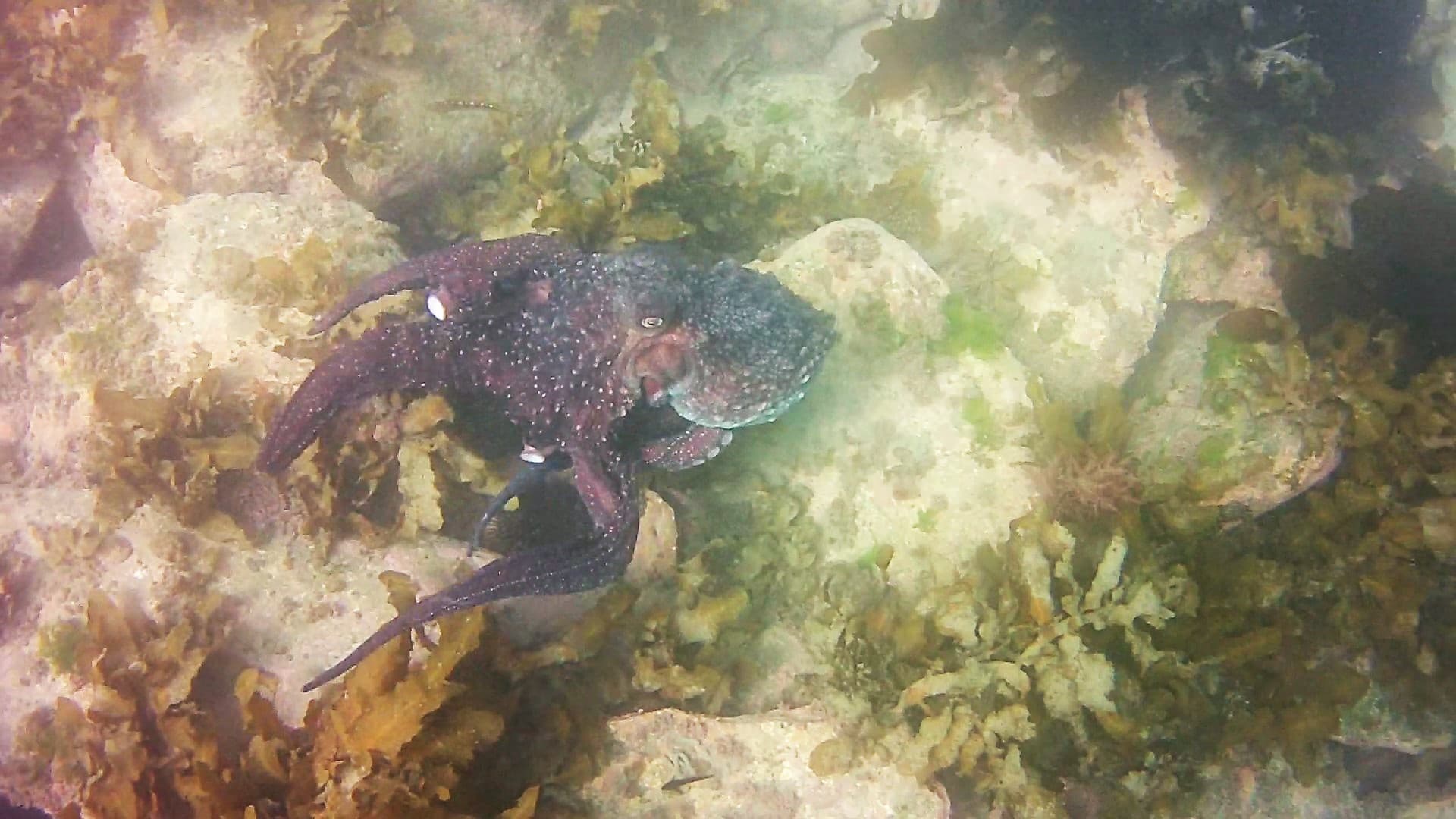

Posted on Wednesday 15 February 2017
I had an amazing time! While there was plenty of work over the 16 days, there were also lots of fun moments, including baking on board a boat, card games with the team, and sunbathing on the deck. The best times were in the water (of course!) particularly free diving with seals at Tonga Island and swimming through the kelp forest at Jacksons Head.
It was interesting to see the contrast inside versus outside of marine reserve boundaries. Inside, I saw a wide range of fish species and some large individual fish, whereas outside I saw more common species and in some areas noticeably smaller fish. Although the trip went well we did have problems due to bad weather. The wind prevented us from sampling at some locations, forcing us to change plans but we still managed to get a large number of samples and data.
I hope you enjoy my photo diary - part 1 is Kaikoura and Marlborough Sounds.
Day 1: On 9 January, we loaded equipment and supplies, then headed north. Testing content does this show up?

Day 1: The research team (from left): Steve Wing, Primary Researcher; me; Sorrel O’Connell-Milne, Research Assistant; Jacquetta Udy, MSc student; Jack Hall, MSc student; and Rebecca McMullin, PhD student. (Photo: Jacquetta Udy)
Day 1: Along the way we saw Hector’s dolphins, albatross and an orca. We reached Timaru around 8pm and continued up the coast through the night.
Day 2: We made our way to Kaikoura in the morning, then set out pots and did CTD (conductivity, temperature and depth) casts and water sampling in the deep canyons off the coast. We filtered the water samples to extract ‘SPOM’ (suspended particulate organic matter). We use SPOM get a ‘carbon signature’ for each of the different depths we sampled from. We also used a fine mesh filter (20μm) to keep any larger organisms so we could identify them later.
Day 2: On our way between sampling sites we saw albatross (including some royals), came across a pod of common dolphins, and saw a whale in the distance surrounded by whale watch boats. We anchored inshore for the night and managed to catch some gurnard in the evening.
Day 3: In the morning we went for a dive to collect macro-algal species from a rocky reef and saw crayfish, octopus, kina and other invertebrates, as well as a red moki and a seal. After the dive we went fishing and caught some sea perch, then completed another CTD (conductivity, temperature and depth) cast in the canyons before continuing north.
Day 3: Unfortunately the weather turned so we had a bumpy trip up the coast. One large jolt was enough to shock one of our generators, setting off an alarm and leaving us without most of the navigation equipment, over half of the lights on board, and no power to the freezers, fridges and toilets. Luckily once we arrived in Port Underwood for the night a loose wire was found inside the generator and we were able to fix it allowing the trip to continue.
Day 4: The weather cleared and we continued north into Tory Channel where we took grab samples, dredge samples, CTD casts (conductivity, temperature and depth), and water samples from around salmon farms. We also did a dive at the first salmon farm, returning with macro-algae, invertebrates and fish for tissue samples. This is Jack taking a grab sample.
Day 4: Sludge, glorious sludge! One of the many grab samples we took.
Day 4: We saw lots of animals in the kelp forest including jellyfish and spotties.
Day 4: Here I’m holding two camouflage crabs (one with two anemones on its back), and a hermit crab collected in a dredge sample. (Photo: Jacquetta Udy)
Day 5: We continued to sample around the salmon farms and also a control site nearby. After the dives, dredging and water sampling was complete we set off for Long Island - Kokomohua Marine Reserve. At Long Island we cruised around the potential dive site areas before heading east and away from the marine reserve towards Jackson’s Head where we collected fish. The fish that we decided to keep were photographed, weighed, measured and labelled. We anchored in the sheltered Ship Cove for the night. These are spotties, blue cod and tarakihi we collected on the dive.
Day 5: Invertebrates and kelp we collected on the dive.
Day 5: Rebecca labels her invertebrates.
Day 6: We surveyed 3 dive sites; the northwest side of Long Island, the south end of Motuara Island, and at Motungarara Island. We did algal and fish surveys identifying species and densities at each location. This is Ecklonia radiata surrounded by Carpophyllum species.
Day 6: At the 3 dive sites a plankton tow, water sampling and CTD cast was done. This is the filtering station manned by Jacquetta and I.
Day 6: Inside the marine reserve we saw banded wrasse (pictured), spotties, yellow-eyed mullet, blue cod, blue moki, urchins and crayfish; all were rather large, which is a sign that the marine reserve is doing well. A fourth non-survey dive was done in Resolution Bay where we anchored for the night to collect fish for tissue sampling and shellfish for work with heavy metal accumulation. After dark we turned on the floodlight and watched yellow-eyed mullet and squid swim past. Previous

Day 7: The weather was calm enough to do dives at more exposed sites in the marine reserve including the south east south west ends of Long Island. Both these sites are characterised by rubble and very little kelp past 5m from the shoreline, and there were also lots of large blue cod in deeper water. In the afternoon we did a third survey dive back at Jacksons Head. (Photo: Jacquetta Udy)
Day 7: Pāua on the rubble.
Day 7: Can you spot the well camouflaged marblefish?
Day 7: We anchored in Ngakuta Bay for the night and went for a free dive to collect more fish samples. The sunset was stunning.
Day 8: The first survey dive of the day was at The Twins where we also collected fish, shellfish and algae.
Day 8: Our second survey dive was back in Long Island - Kokomohua Marine Reserve on the north east side. This area was incredibly kelpy and home to a wide variety of macro-algal species, as well as pāua, banded wrasse, spotties, butterfish, leather jacket (pictured), and lots of big blue moki. Blue moki are a commercially fished species so to see them so large and in such high numbers is a good sign. We did a final collection dive near Jacksons Head before heading to Otanerau Bay for the night.

Day 8: We saw an octopus on our afternoon collection dive (Photo: Rebecca McMullin)